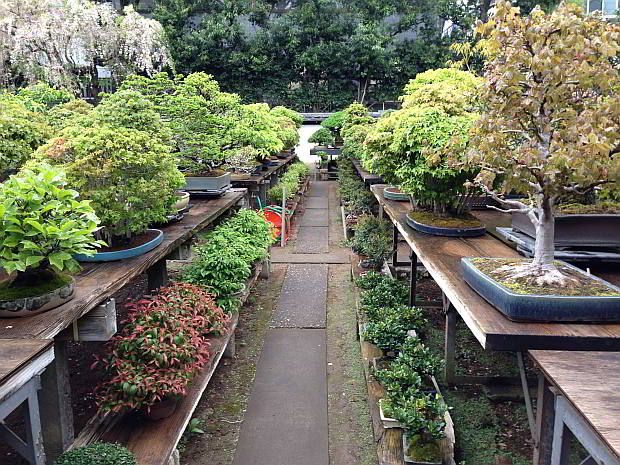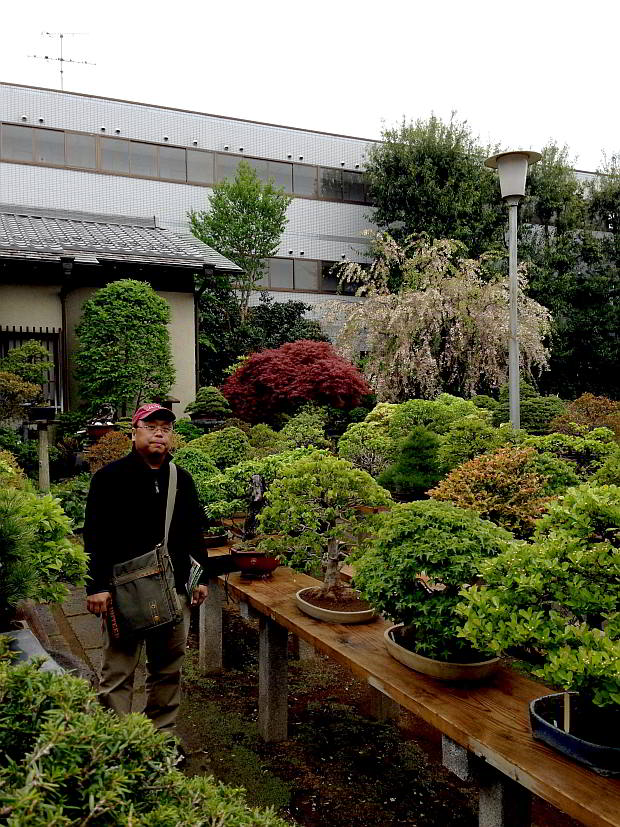Omiya (“grand shrine”) gets its name from the Musashi Ichinomiya Hikawa Shrine, said to have a history of more than 2,000 years and one of the greatest old shrines in Japan.
The village of Omiya is located in Saitama Prefecture, which is about 30 minutes away by train from Tokyo. Stepping out of the hotel, I was overwhelmed not only by the weather but also the train schedules and queuing up one has to go through. I think spring in Japan this year was a little late, and colder than what I had experienced in the north eastern hemisphere.
While I just love a late spring, I was a little worried as the call of Omiya beckons me in the cold light of day. Early spring is really more of a problem for farmers and gardeners like me since new flowers are vulnerable to frost and that means fewer crops.
I did not think I’d have a problem as far as language is concerned because I’ve always relied on my proficiency in English wherever I traveled. But here it became very challenging, despite the fact that Tokyo’s world-class public transport system will get you anywhere you want to go. Plus, most places worth visiting are conveniently situated near a Japan Railways (JR) station. Alas, I can’t read Kanji, and there are no English translations.
I had no choice but to return to the hotel and ask the guest relations officer for printed directions. Somehow that helped. And luckily, my nephew Vince from the UK who joined us in Tokyo decided to come along with me. Vince spoke and read a bit of Japanese and like me was also interested in bonsai.
So we headed to the Suidobashi station at 9:30 a.m. and took a JR Sobu Sen (line) to the electronics sector of Akihabara, home of Japan’s Otaku culture of manga and anime. It was a short ride, and from Akihabara we transferred to another train, this time a Keihin Tohoku Sen to Ueno. This station is near the Ueno Park, which contains the Tokyo National Museum and the nearby Ueno Zoo. From Ueno we moved to a Takasaki Sen train and finally to Omiya. In Ueno you begin to leave the city’s din and crowds and notice the landscape slowly changing. By 10:15 a.m., we were at Omiya. We survived! I breathed a sigh of relief. Contrary to my expectations though, Omiya is not all that rural. The station is a major interchange for the East Japan Railway.
Good thing there was a tourist information center at the station and its staff graciously gave us directions to the bonsai village. So armed with an Omiya half-day course brochure, we excitedly made our way. There were 11 points of interest, all within walking distance of each other, from the Municipal Museum to the Minuma Green Center which has a greenhouse that’s open to the public. The bonsai village itself was constructed by bonsai specialists who moved from Tokyo after the big earthquake in 1924. Today, it is a major sightseeing spot in all of Omiya.
We were lured to the bonsai village. (The museums can wait, even with its free entrance) Not wasting time, we took a train and stopped at Omiya Koen station, and from there walked our way to several bonsai nurseries. It was a Friday and the weather was balmy. At one nursery, I bought several cutters; and in another, I bought a sturdy turn table. I can only buy so much since everything was expensive. Also, one must know that taking photos of the bonsai was not allowed. However, through Vince’s fragmented Japanese, I was able to befriend a gardener and thus permitted to take snapshots, even pose beside the prized plants. The Japanese black pines caught my eye in every nursery we visited. I love its straight upright trunks (Chokkan). There were several variations I spotted—a hollowed trunk (Sabamiki) in one, and there were branches plus apexes have been made into a Jin in another. One of my favorites is the cascade style (Kengai) where its tip swings away and not towards the trunk base. There were several sub-classifications depending on the degree of the drop. In a regular cascade, the drop should be about 45 degrees. A Dai-Kengai drop is almost vertical, showing no crown. I also saw a Gaito-Kengai, which can be appreciated as it looks like a tree growing on a mountain top, with a part of it hanging over a cliff. And, of course, there were also semi-cascades (Han-Kengai) in a beautiful medium-depth pot. There were Wisterias, Zelkovas, Picea, Pinus spp. and more than a few magnificent red and orange Japanese trident maple (Acer sp.) I saw temperate zone specimens, which I can never grow in the Philippines, some done in Fukinagashi (windswept style), some in informal upright (Moyogi) and still some in group plantings style.
Our last stop was the Omiya Bonsai Art Museum in Toro-cho, Kita Ward, with an entrance fee of 300 yen. Here, there was a collection gallery where at least five bonsai works are displayed for one to study, observe, and most of all, enjoy. Enjoy it, I did, just as it was truly humbling for me to be beside a majestic 150-year-old tree. In the garden outside and with Japan’s blue skies as backdrop, there were about 50 (even more) bonsai displayed waiting to be esteemed, loved. There are other special exhibition rooms housing old woodblock prints depicting bonsai, bonsai artworks, and bonsai pots, some of them dating back to the Edo period. And one more thing. Do not leave the museum without going to a Tatami room (Zashiki Kazari) where a bonsai gleams best is staged. There are three levels of formality here: Shin, Gyo and So which creates a perfect space for each.
Only in Omiya have I experienced this “living art.”
We left Omiya around 3 p.m., happy and full of insight. I tried to absorb everything I saw—ideas that will be put to good use when I start creating bonsai. Only then can I truly say that my bonsai is a work of art, I guess.
On my last day in Japan, we visited the Meiji Shrine near Tokyo and found this inscription, a poem by Emperor Meiji: The stillness of this part of Yoyogi makes me forget I am in Tokyo. There is such tranquility here.
* * *
From Cebu, I joined a group of 70 organized by Ms. Jeanne Teh of Globallink, Cebu (254-4539). The tour included shrines and temples, as well as lots of shopping. As an added treat, we saw a few cherry blossoms or sakura along the way. We stayed at Tokyo Dome Hotel in Bunkyo near Tokyo for four days, and on the last day had a special authentic Japanese accommodation at Hotel Mifujien in Fujikawaguchiko-machi in Yamanshi Prefecture.
* * *
The writer, a Biology faculty of CIT-University, is a member of the Bonsai Society of San Francisco. He conducts summer bonsai workshops in his garden in Talisay City. A basic bonsai workshop will be held on May 12 and 13. For info, contact 09153889282; 09328599765.




